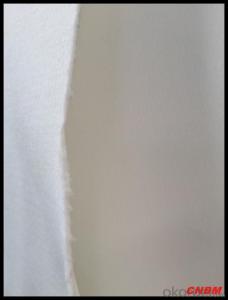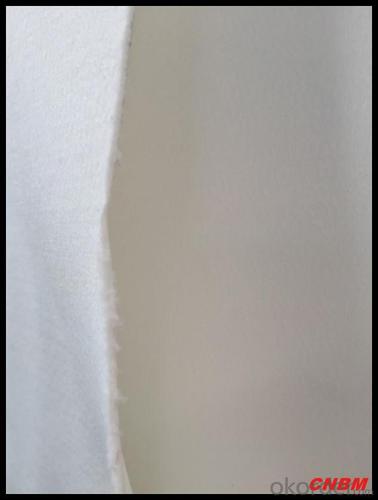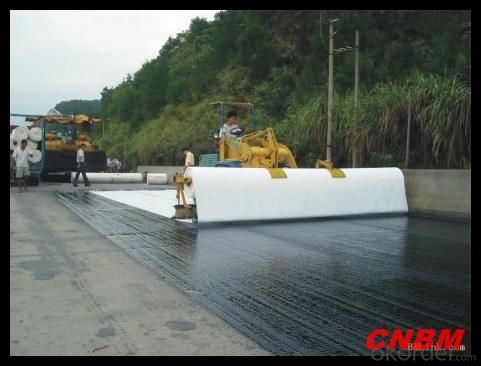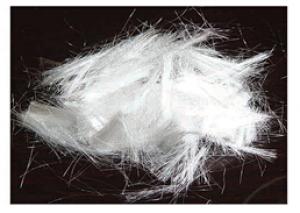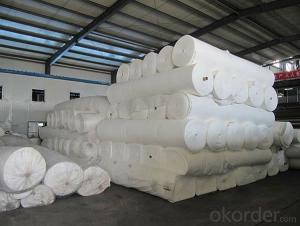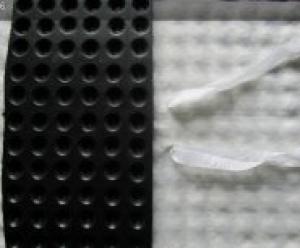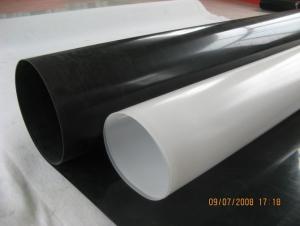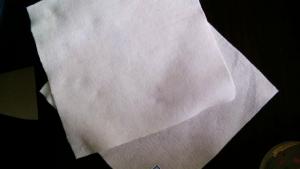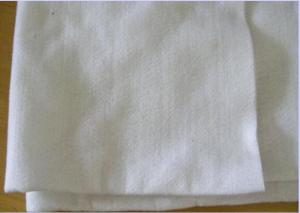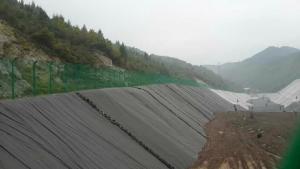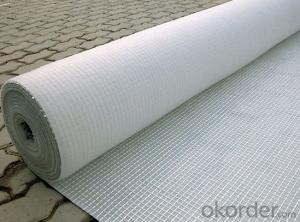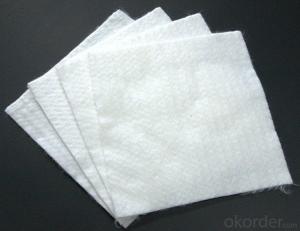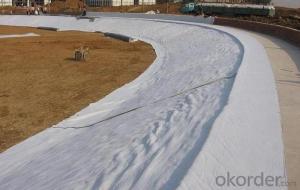Geomembrane Geotextile for Highway, Railway, and Dam
- Loading Port:
- China main port
- Payment Terms:
- TT OR LC
- Min Order Qty:
- 2000 m²
- Supply Capability:
- 500000 m²/month
OKorder Service Pledge
OKorder Financial Service
You Might Also Like
Non Woven Geotextile Introduction:
Nonwoven geotextiles are manufactured from the extrusion of polypropylene fibres which are then laid down on a manufacturing "bed" and then needle punched to entangle the fibres such that a dimensionally stable product is formed. Some additional thermal treatment is then applied to further improve the strength of the geotextile. Because of this manufacturing process non-woven geotextiles are generally best used in applications of drainage, filtration and protection
3. Non Woven Geotextile Features:
Wide-width rolls
Quality Certified
Proven for use in Main Roads works
Large range to suit the application
4. Non Woven Geotextile Application:
(1) artificial filling foundation movement of ground water.
(2) gravel filter layer surrounding the periphery of the drain pipe drain.
(3) in water conservancy projects wells, relief wells or inclined pipe filter.
(4) for retaining wall backfill reinforcement, or for anchored retaining wall panel.
(5) reinforced flexible pavements, crack repair roads, prevent the reflection cracks of pavement.
(6) in ternal vertical or horizontal drainage, dissipation of pore water pressure in soil.
(7) water impermeable geomembrane dam or embankment in the lower part of the back or the concrete.
(8) the isolation layer between the road ballast and subgrade, isolation layer or between the embankment and soft foundation.
(9) the isolation layer soil between highway, airport, railway ballast and artificial rockfill and soil fabric.
5. Non Woven Geotextile Product Show:
logical environment protection engineering
7.Other type nonwovens:space cotton,heat preservation and sound insulation material,oil sorbent mat,cigarette filter tip,tea bag,shoe material,etc

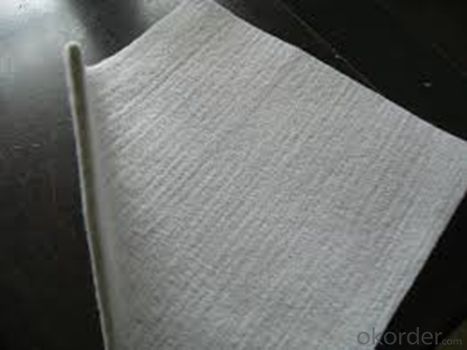
Density | Thickness | Breaking Strength | Elongation of Fracture | CBR Bursting Strength | Vertical Penetration Parameter | Equivalent Aperture |
g/m2 | mm | KN/m | % | KN | cm/s | O95 mm |
65 | 1.2 | 2.8 | 40 ~ 80 | 0.7 | K x (10-1 ~ 10-3) (K = 1.0 ~ 9.9) | 0.07 ~ 0.2 |
75 | 1.4 | 3.3 | 0.8 | |||
100 | 1.6 | 5.0 | 0.95 | |||
150 | 1.52 | 7.5 | 1.5 | |||
160 | 2.0 | 8.5 | 1.60 | |||
200 | 2.4 | 11 | 2.10 | |||
250 | 2.8 | 14 | 2.60 | |||
300 | 3.4 | 16 | 3.20 | |||
400 | 4.0 | 21 | 4.0 | |||
500 | 4.5 | 25 | 4.8 |
Packaging & Shipping
Packing: PLASTIC FILM INSIDE, AND WOVEN BAG OUTSIDE
Shipping: About 15 days after receipt the deposit
pecifications
geotextile fabric
permeability,filtration,easy for construction
ISO and CE certificate
Good quality and competitive price
Our Service
Quality assurance
1.On a regular basis or as per your request,we entrust national testing agencies to conduct quality inspections
2. Strictly in accordance with the ISO9001-2008 international quality system standard,we monitor and manage the whole process throughout production,quality testing,and measurement to ensure product quality
3. For quality-related construction delay or substandard construction(except for damage or losses due to customer’s responsibility or irresistible natural disasters),we have refunding,replacement,and repair services.We will respond to customers’ feedbacks on quality issues within 24 hours.
After-sales service
1.In order to provide customers with comprehensive technical support,we will provide technical and other related information upon request in a timely manner.
2.In required,we will appoint specialized technicians to the construction site to give technical trainings to construction people,and offer technical guidance throughout the whole construction process.
3.For damage due to shipment and delivery,after we receive the complaint,we will check the issure through provided pictures and videos.If our responsibility is confirmed,we wil offer free replacement.
4.When the construction is completed,as your request,our technical staff may participate in the final acceptance.
FAQ:
Q: What kind of payments does jenor support?
A: T/T, L/C, Cash are accepted.
Q: Do you charge for the samples?
A: Accordeing to our company policy, the samples are free, we only charge the freight fee. And we will return the freight fee during the next order.
Q: Can you produce according to customers' design?
A: Sure, we are professional manufacturer, OEM and ODM are both welcome.
Q: Do you have other products?
A: Yes, please check the pictures:
- Q: A creek next to our property is eating away the embankment and an engineer suggested using the sand in the creek bed.. wrapping it up in geotextile fabric in the form of a burrito but he did mnot mention how to fasten them shut..any ideas or experience with erosion control out there?
- Get some tie wire or baling wire. It's a soft wire used for tying reinforcing steel together or for baling straw. You could also use plastic cable ties.
- Q: Is there a geotextile between the waterproofing membrane and the rigid layer?
- Need to prevent the waterproof layer from being pierced. Huazhi geotextile material manufacturers
- Q: How do geotextiles help with sediment control in water bodies?
- Geotextiles act as a physical barrier that prevents sediment from entering water bodies. They are designed to filter and separate sediment particles, allowing water to pass through while retaining the sediment. This helps in reducing erosion, improving water quality, and protecting aquatic ecosystems from the harmful effects of sedimentation.
- Q: What are the factors to consider when selecting geotextiles for landfill applications?
- When selecting geotextiles for landfill applications, there are several factors that need to be considered. These include the strength and durability of the geotextile, its filtration and drainage capabilities, chemical resistance, and its ability to withstand long-term exposure to environmental conditions such as moisture and ultraviolet radiation. Additionally, factors such as cost, availability, and compliance with regulatory requirements should also be taken into account.
- Q: How do geotextiles help with separation and stabilization in railroads?
- Geotextiles help with separation and stabilization in railroads by acting as a barrier between the subgrade and the ballast layer, preventing the mixing of materials and maintaining the integrity of the track structure. They also provide reinforcement by distributing loads more evenly, reducing settlement and promoting overall stability.
- Q: How do geotextiles affect water quality?
- Geotextiles can positively impact water quality by acting as a filtration system. They prevent soil erosion, trap sediment, and filter out pollutants from stormwater runoff, thus reducing the amount of contaminants that reach water bodies.
- Q: The vertical permeability coefficient of 400 g per square filament geotextile is generally how much
- 1.0 × 10-1cm / sK × (10-1-10-3) I specialize in the production of geotechnical materials
- Q: What are the key considerations for geotextile installation in areas prone to landslides?
- The key considerations for geotextile installation in areas prone to landslides include: 1. Site evaluation: Conduct a thorough assessment of the site to understand the slope stability, soil conditions, and potential triggers for landslides. This will help determine the appropriate type and strength of geotextile needed. 2. Design and engineering: Engage geotechnical engineers to design a tailored solution based on the specific needs of the site. They will consider factors such as slope gradient, soil type, and expected loads to determine the appropriate geotextile specifications. 3. Drainage management: Proper drainage is critical to prevent water accumulation, which can increase the risk of landslides. Geotextiles can be used to enhance drainage by allowing water to pass through while retaining soil particles. 4. Anchoring and securing: Geotextiles should be securely anchored to the slope to ensure stability. This may involve using appropriate anchor systems or integrating the geotextile into the existing slope or retaining structure. 5. Monitoring and maintenance: Regular monitoring is essential to identify any signs of distress or movement in the slope. Timely maintenance and repair of the geotextile system can help prevent potential failures and ensure its long-term effectiveness in landslide-prone areas.
- Q: How are geotextiles manufactured?
- Geotextiles are typically manufactured using a process called needle punching. This involves mechanically interlocking synthetic fibers together to create a strong and durable fabric. The fibers are first carded, meaning they are aligned and separated, before being fed through a machine that punches them with barbed needles. These barbs entangle and interlock the fibers, creating a stable fabric structure. Further processes such as heat setting, calendaring, and coating may be applied to enhance the geotextile's properties, such as increasing its resistance to UV degradation or improving its filtration capabilities.
- Q: How do geotextiles help in reducing the risk of slope failures?
- Geotextiles help in reducing the risk of slope failures by providing reinforcement and stabilization to unstable slopes. These materials are placed within the slope to increase its strength and prevent erosion. Geotextiles also help in promoting water drainage and filtration, which reduces the build-up of hydrostatic pressure within the slope. Overall, geotextiles enhance the stability of slopes and mitigate the potential for landslides or slope failures.
Send your message to us
Geomembrane Geotextile for Highway, Railway, and Dam
- Loading Port:
- China main port
- Payment Terms:
- TT OR LC
- Min Order Qty:
- 2000 m²
- Supply Capability:
- 500000 m²/month
OKorder Service Pledge
OKorder Financial Service
Similar products
Hot products
Hot Searches
Related keywords
